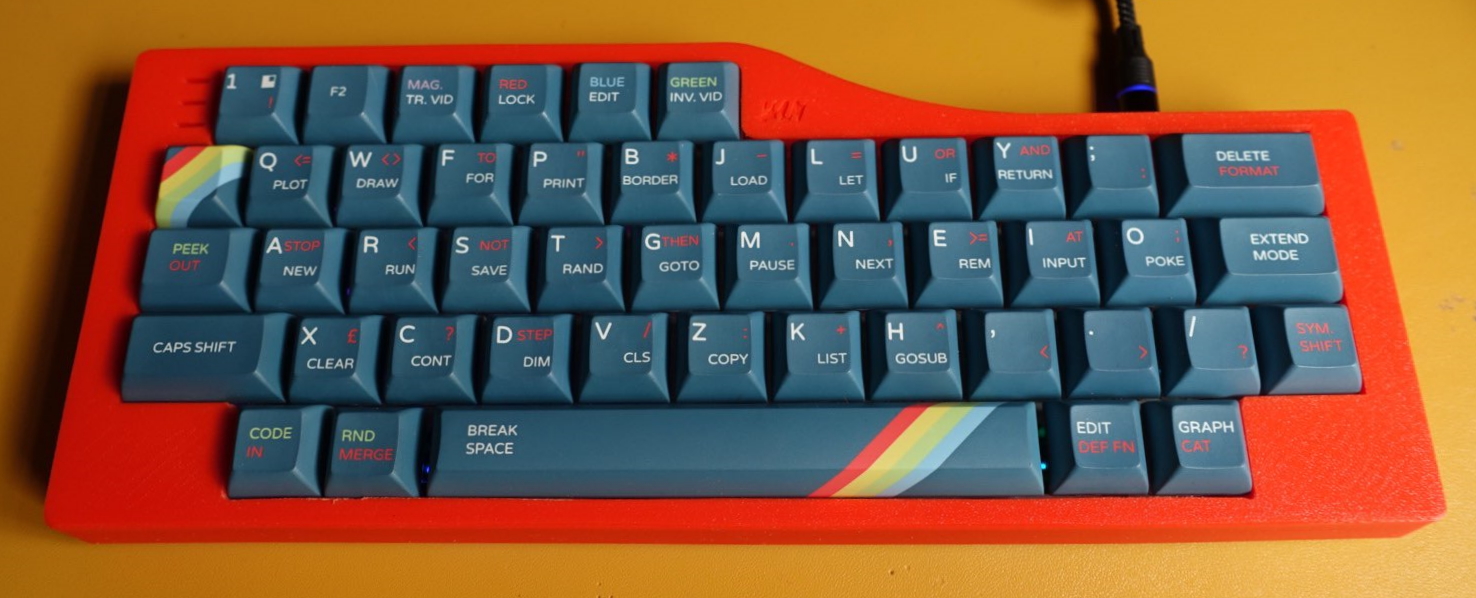The V4N4G0N R4 group buy is live! Boards are $375 and available until February 1st at Trashman clun!
V4N4G0N (pronounced "vanagon", also referred to as "V4N") is a 45% keyboard based on MiniVan that includes a half-numrow (1-6 keys).
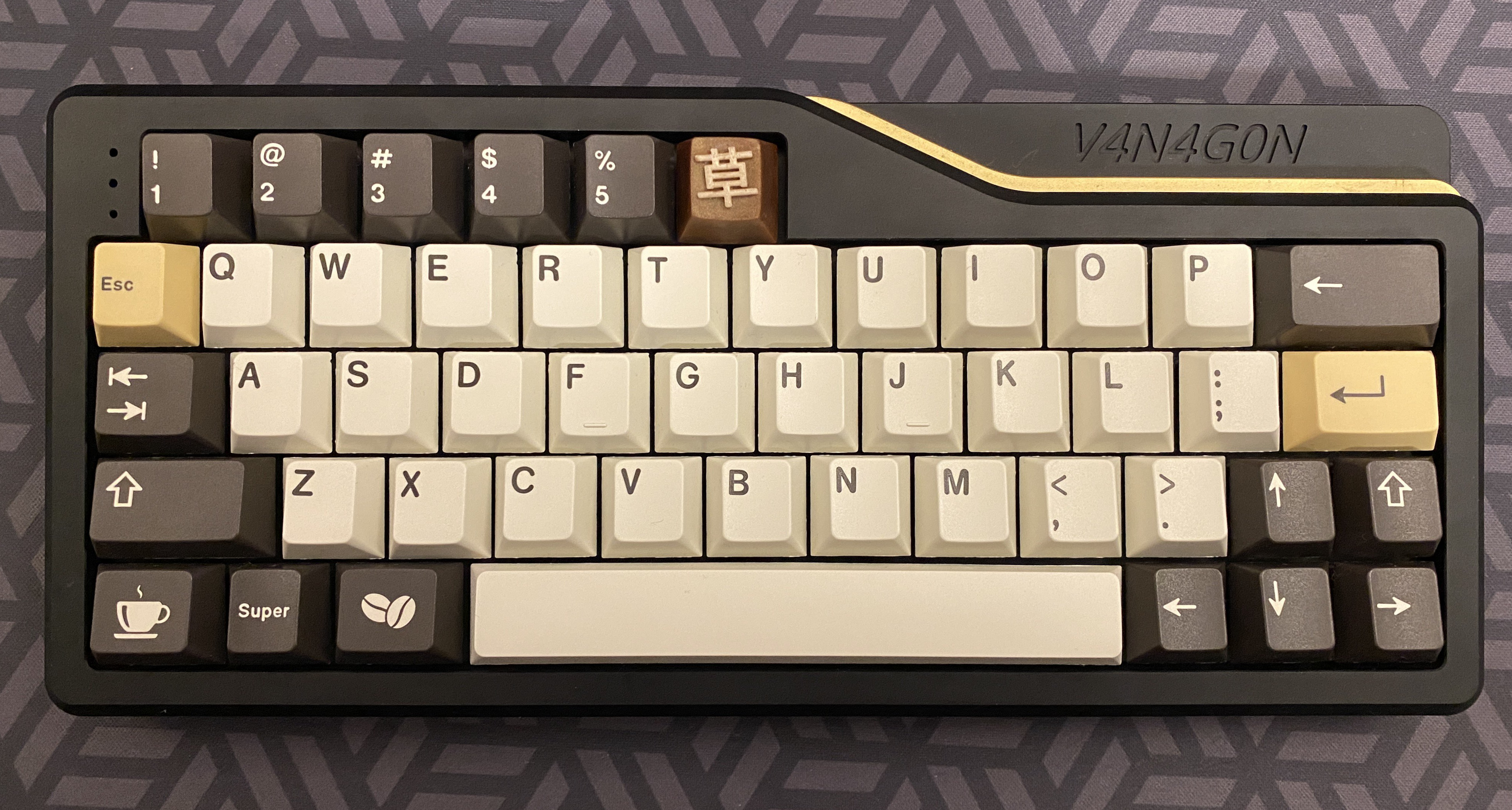
There have been 3 group buys for V4N4G0N. The first round of 25 boards sold for $360 each in December 2019. The second round of 30 boards sold for $335 each in August 2020. Round 1 boards were more expensive due to differences in the case design. A total of 55 metal cases were produced between the first two rounds. Each V4N4G0N kit from the first two group buys included two PCBs and two FR4 plates so a second board could be assembled by purchasing or 3D printing a compatible case.
The V4N4G0N round 3 group buy ran from April 26-30th, 2021 on Trashman.club. Round 3 boards (referred to as "V3N" or "Hullagon") shipped with a single PCB, a single FR4 plate supporting the "standard" layout, a redesigned case made of silver anodized aluminum, and a free set of DSA Hullagon keycaps. The R3 plate received a redesign that add
Embrace was designed and released as an evolution of V4N4G0N's layout with several advanced features including per-key RGB, hotswap switches, and a rotary encoder.
¶ Design
| Designer | Trash Man |
|---|---|
| Firmware | Trash Configurator |
| VIAL (download) | |
| Layouts | KLE link |
| Mount style | Gasket mount (R1/R2) |
| Bottom mount (R3) | |
| Plate files | DXFs on the Files page |
| Switches | Soldered MX |
| LEDs | 3x 3mm indicators |
| 3x RGB indicators (R3 only) | |
| Connection | Integrated USB-C |
| Controller | ATmega32u4 |
V4N4G0N is a 45% keyboard based on the JetVan layout with an added half-numrow. It was designed to bridge the gap between the Minivan and larger (60%+) keyboards to allow for more traditional use while playing games that require number keys. The numrow is indented a half-key to match the layout of larger boards.
Three indicator LEDs are placed in a vertical line in the empty space to the left of the numrow. The board connects to the host using a USB-C connectior located on the left hand side between the 1 and 2 keys - a notable design change from Minivan/JetVan that have the USB-C port placed on the right side under the Backspace key.
V4N4G0N was named after the Volkswagen Type 2 (T3) which sold as the "VW Vanagon" in North America. The inspiration for the angled case design came from the T3 Westfalia Camper variant which featured a pop-up section on the rear half of its roof. An image of the vehicle is featured on the front silkscreen of all V4N4G0N PCBs.
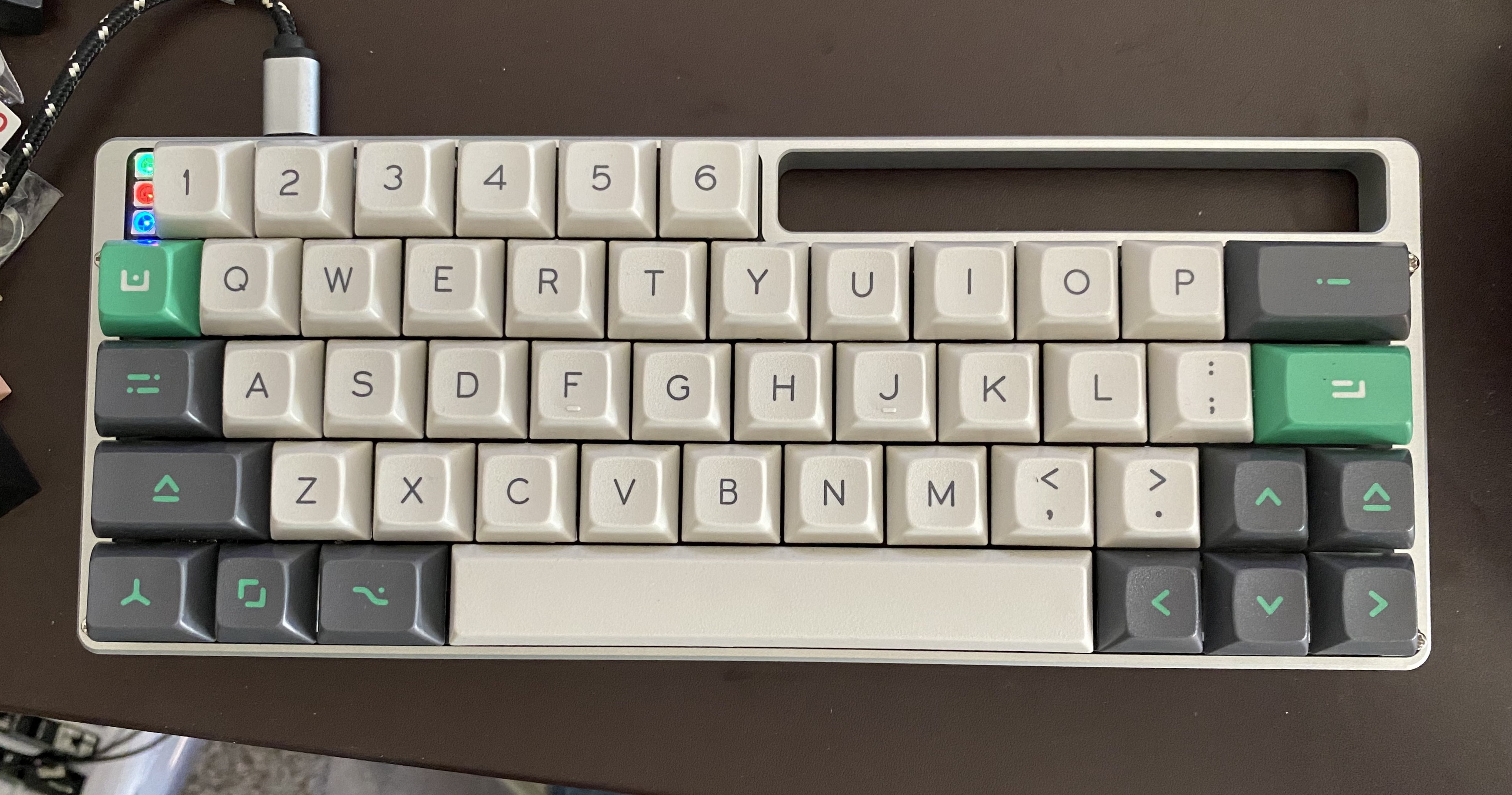
¶ Layout
V4N4G0N supports two layouts - one with a standard 6.25u spacebar and one with split 2u spacebars. The original plan for the board was to only support a single layout with a 6.25u spacebar (JetVan layout) but after feedback from community members a split space layout was added (though it is notably different from any of the existing MiniVan layouts.
- Standard - JetVan with a half numrow. The bottom row includes a 6.25u spacebar with modifiers on the left and arrow keys on the right
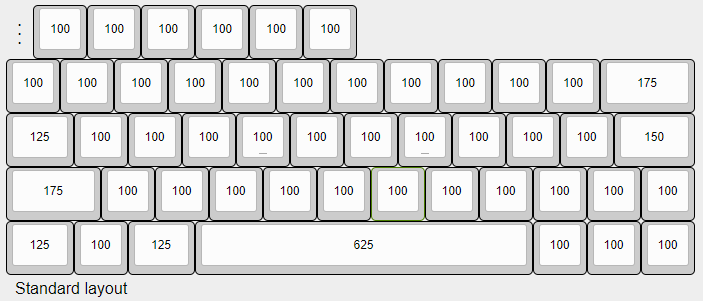
- Split space - the large spacebar and the 1.25u key to its left are replaced with a unique bottom row layout including a pair of 2u spacebars in the middle (MiniVan uses a 2.25/2u split spacebar layout)
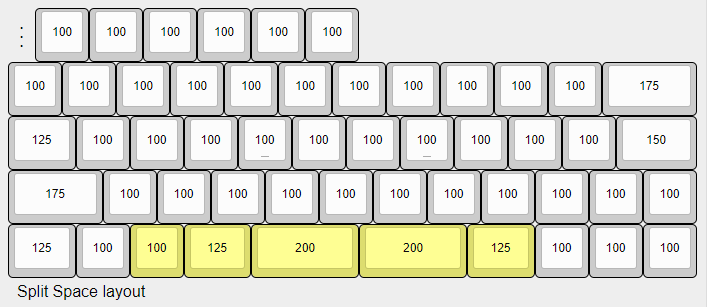
¶ PCBs
The official V4N4G0N PCB designed by Trash Man has only seen minor revisions between the various group buys.
¶ Rev 1.0
The first group buy included a rev 1.0 PCB that features a black solder mask with a gold silkscreen on the front to match the black and brass case. The R1 silkscreen includes the name of the board in large font across the bottom two rows and a picture of a VW Vanagon in the "bump" for the half number row. Written across the other side is the text "Designed by the infamous VanMan". Three 3mm through-hold LED indicator positions are located in the top-left corner. The LEDs need to be installed before installing the plate and switches as most LEDs have flanges and cannot be installed through the plate holes. There is no reset button on the PCB. A pair of reset pads are located on the bottom of the board next to the Backspace switch location with the label SW_RESET0. Silkscreen text for the three indicator LEDs is printed backwards on the rear of the PCB.
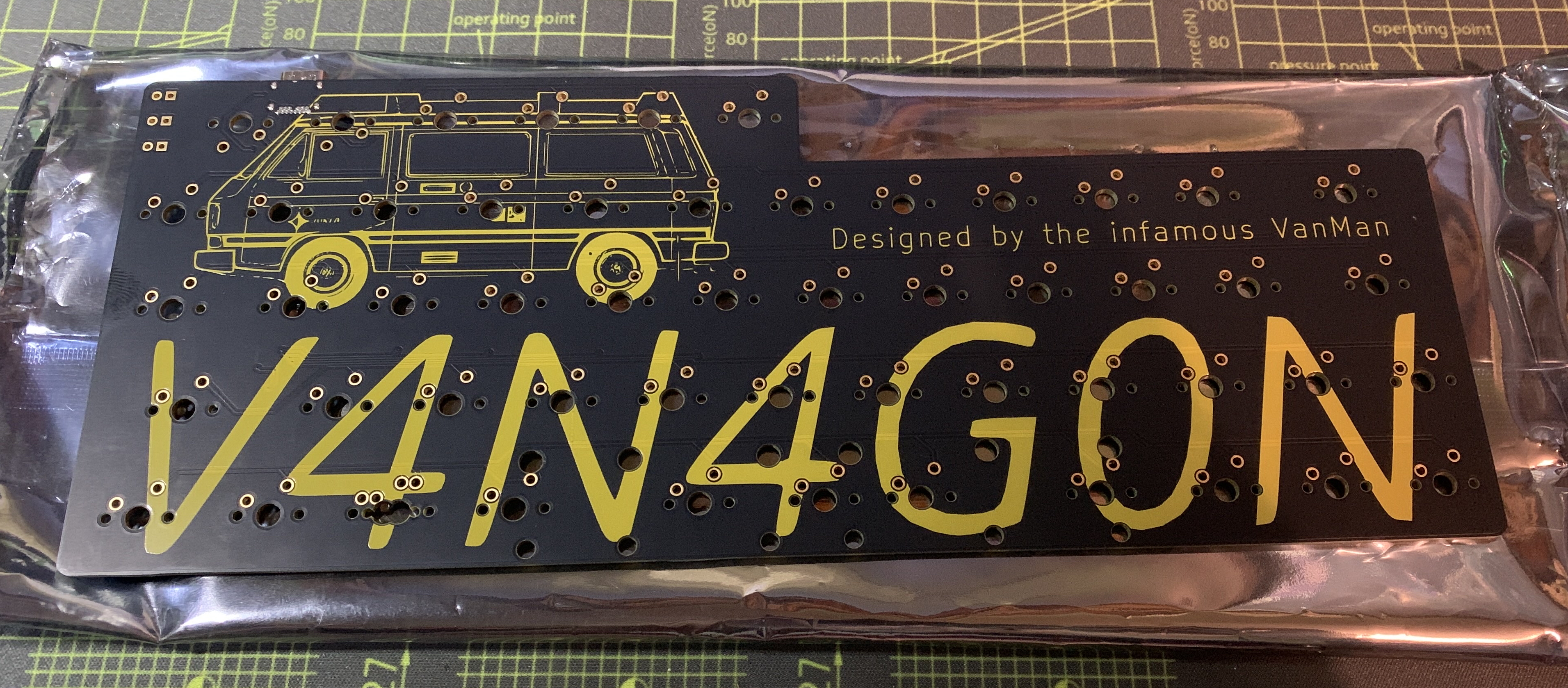
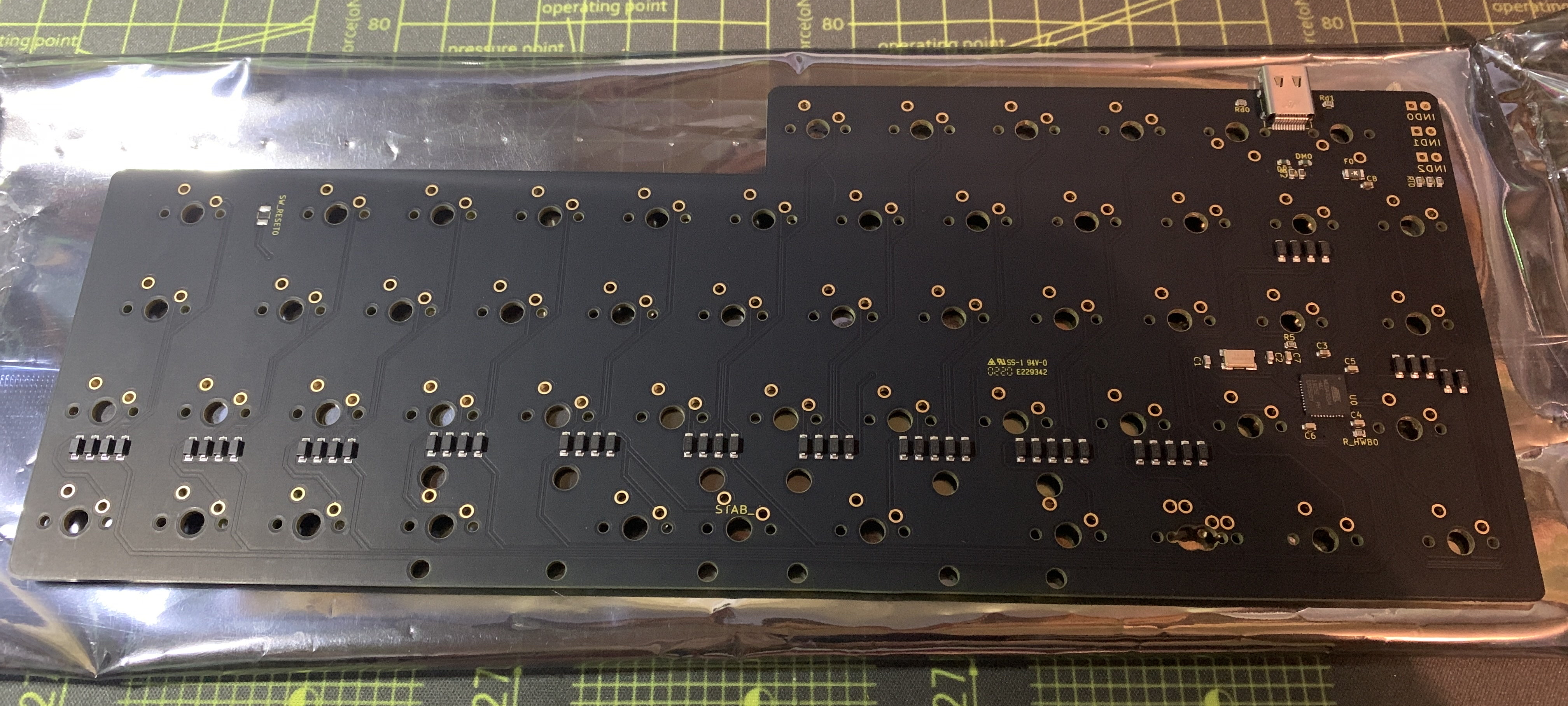
¶ Rev 2.0
Round 2 V4N4G0N kits included updated PCBs with a green solder mask and white silk screening. The boards still feature the V4N4G0N wordmark across the bottom and the image of the van in the bump. The remaining text was changed to read "Designed by the trash man" with an additional seal stating "100% Garbage - Trash Man approved!". The board still includes reset pads in the same location as revision 1.0 boards. Three 3mm through-hold LED indicator positions are located in the top-left corner. The LEDs need to be installed before installing the plate and switches as most LEDs have flanges and cannot be installed through the plate holes. Several unused pins from the MCU were broken out to through-hole pads on the PCB that can be used for modifications. Four are located below and to the right of the MCU on the back of the board and are labeled VCC, GND, PC7, and PC6. Two more pads to the left are labeled PD0 and PD1. One final pad above the MCU is labeled PE6. Silkscreen text for the three indicator LEDs is printed backwards on the rear of the PCB.
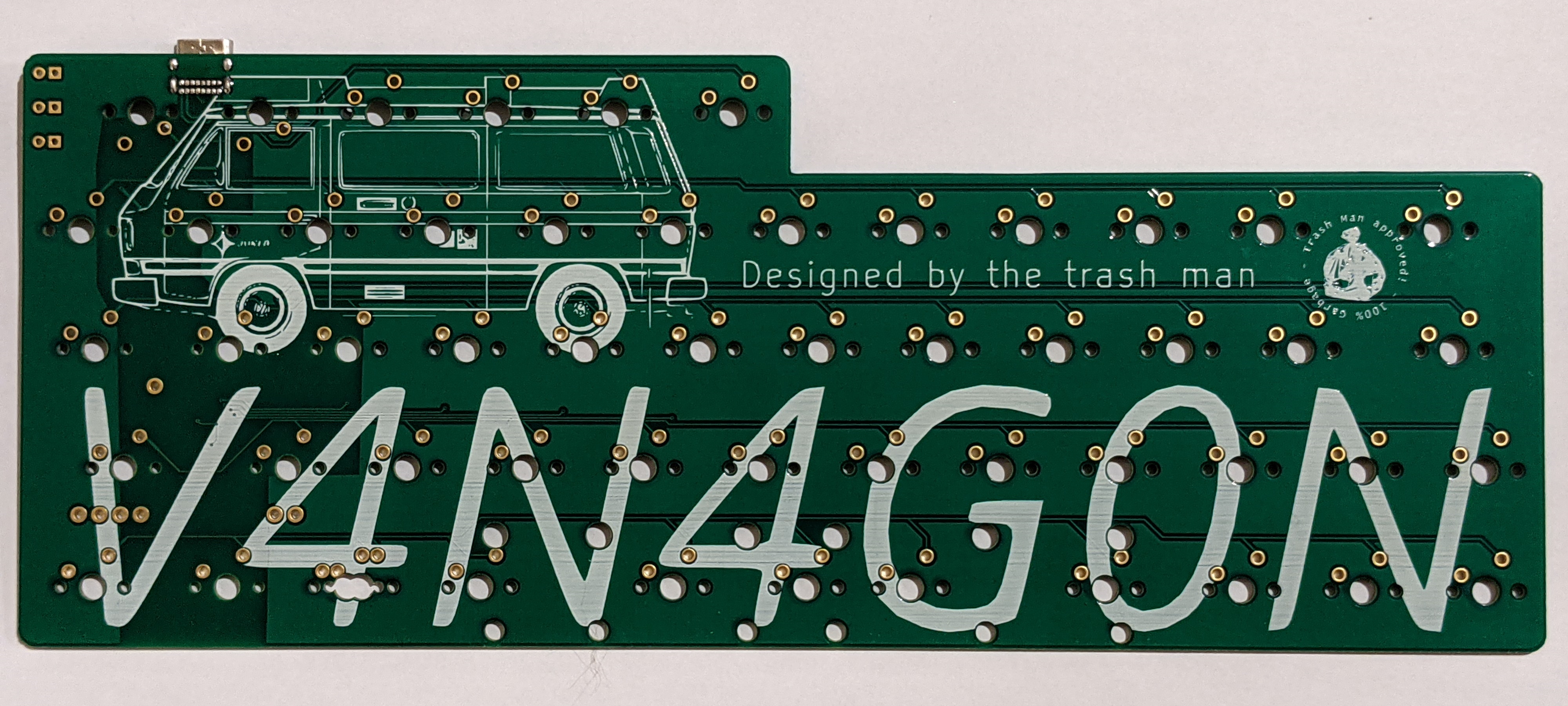
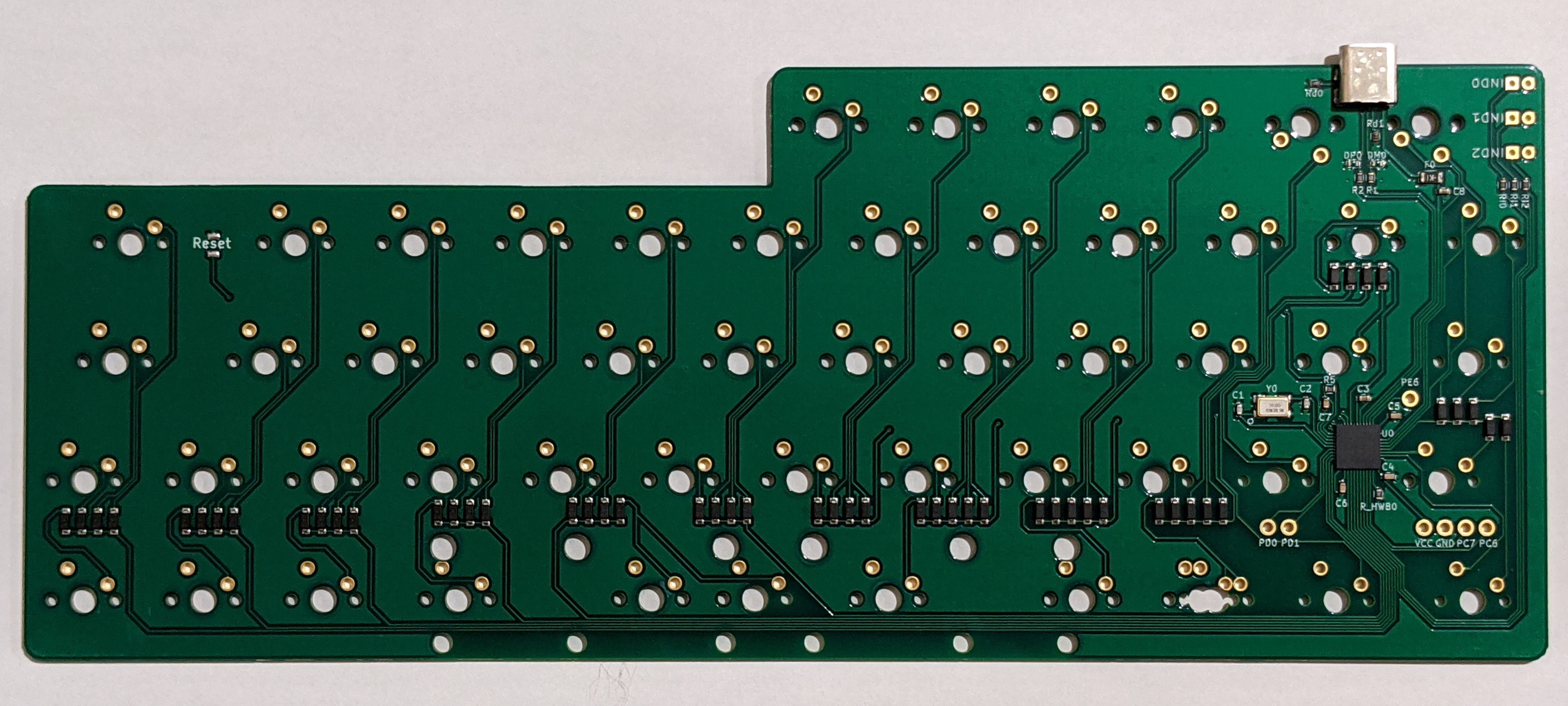
¶ Rev 3.0
Round 3 kits include a new revision 3 PCB. A one-day group buy for standalone R3 PCBs ran the day after the R3 V4N4G0N group buy ended. The resistor value for the indicator LEDs has been increased from 330Ω to 1kΩ, reducing the maximum brightness of the LEDs. This was done as the indicators are directly visible through the exposed plate of the round 3 case. The boards are otherwise functionally identical to R2 PCBs and are compatible with all previous cases.
The boards are green with white silkscreen like the R2 boards. Silkscreen text for the three indicator LEDs is correctly printed on the rear of the PCB (it was reversed on R1/R2 PCBs). The solder pads are also silver rather than gold. These are the only two indicators that a given PCB is an R3 board without checking the resistance of the three indicator LED resistors.
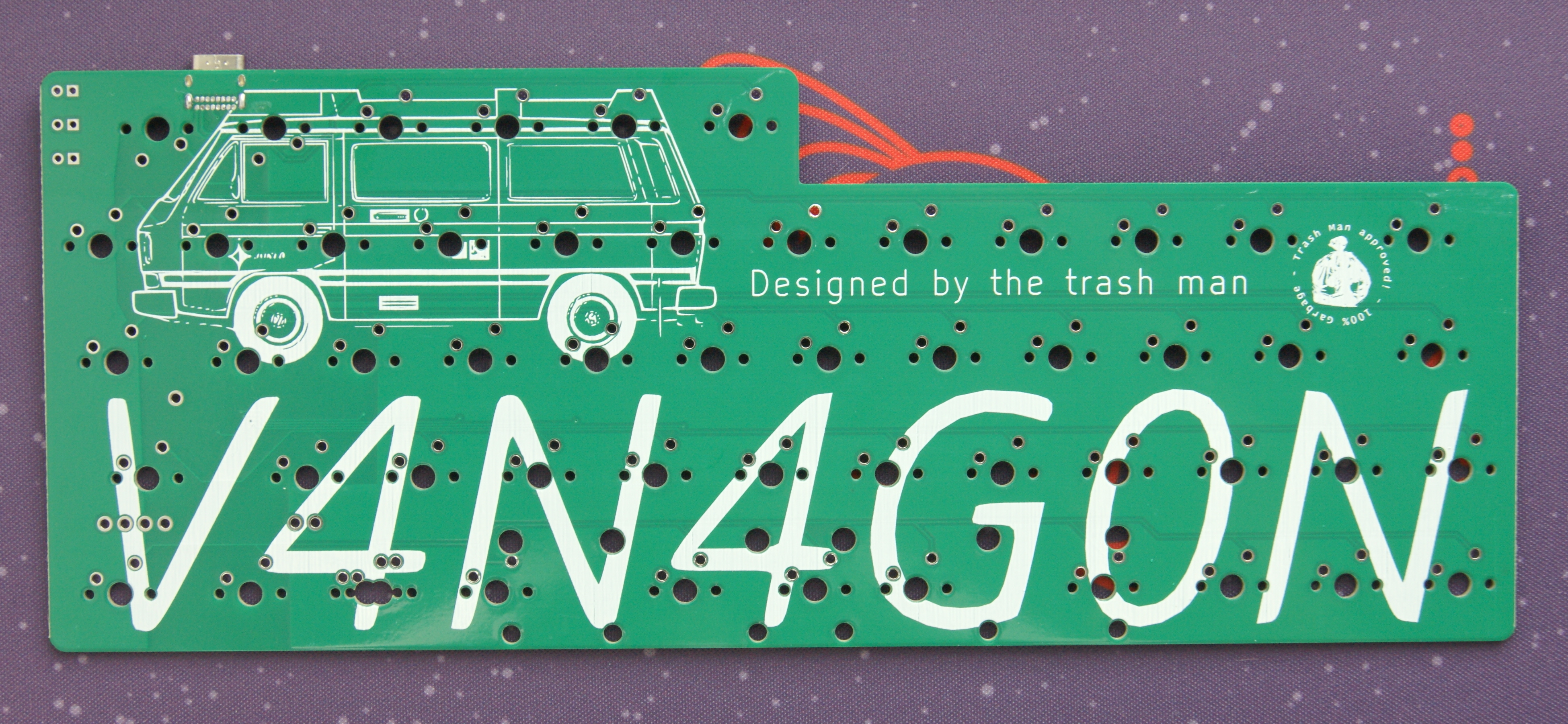
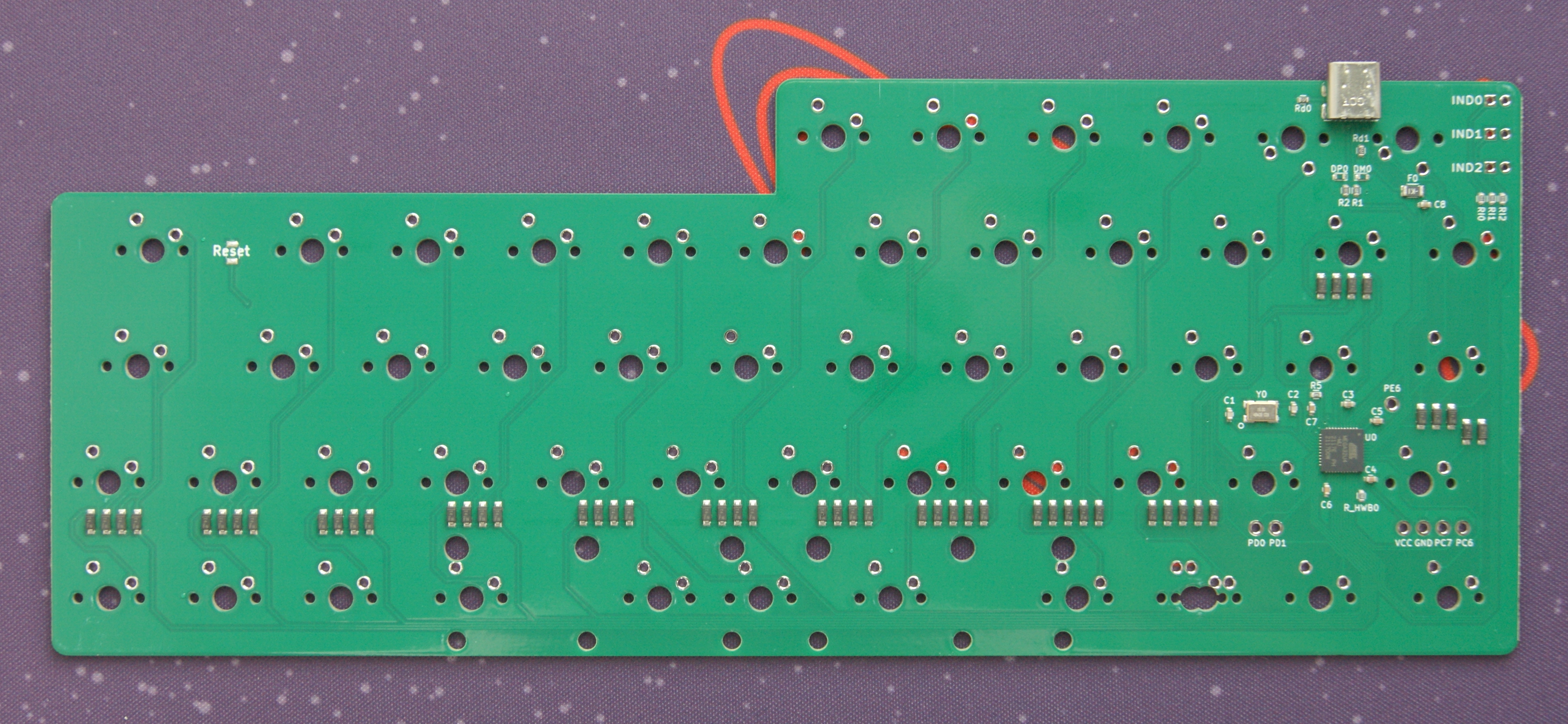
¶ Rev 4.0
The R4 PCB is currently in the design phase. Trash Man has stated that the board will only support the "Standard" layout featuring a 6.25u spacebar. There will also be no scan matrix on the PCB; each switch has a dedicated input pin on the STM32 microcontroller. The PCB is expected to use a daughterboard for the USB port connected with a JST cable.
Trash Man hosted a live stream (VOD link) in which he revealed several features of the new PCB. The most notable feature is support for Hall Effect switches in addition to standard MX switch support. All switches are south-facing to ensure full compatibility all with keycap profiles.
¶ Community
¶ V4N4G0RTH0N
V4N4G0RTH0N is an ortholinear PCB designed for V4N4G0N cases. It offers a unique layout with two 6x4 clusters anchored by a pair of 3u spacebars that are separated with a .75u gap down the middle of the board.
¶ Monorail
Monorail is a trio of hotswap V4N4G0N-compatible PCBs that support a variety of bottom row layouts. The boards feature breakaway number rows for installation in MiniVan cases. They include underglow RGB LEDs and pads for a JST connector to enable compatibility with USB daughterboards.
¶ Memoria
Memoria is an open-source hotswap PCB for V4N4G0N cases. Memoria uses Minisub bottom row layouts to enable both big bar and split space layouts with full hotswap support.
¶ Keyllective
Keyllective.com creates replacement PCBs for several 40% keyboards, including V4N4G0N. Their site hosts links to the PCB gerber files in their GitHub repo and instructions to order a PCB from JLCPCB using the provided files.
¶ Cases
The metal V4N4G0N case from group buys exists in two distinct styles.
The first design, shipped with the first 2 group buy rounds, is a three-layer compression-mount case. The PCB is gasket mounted on six 6x2mm rubber bumpons between the middle and top layers. Twelve M3 x 12mm socket cap screws installed through the bottom hold the layers together. The three layers are all shaped slightly differently. The bottom layer is a full rectangle and includes the "V4N4G0N" wordmark milled into the open space to the right of the half number row. The middle and top layers are cut away in that section to follow the layout of the keys across the top row. The angles of the cuts are designed to reveal a hint of the middle layer of the board when viewed from above.
The third group buy introduced a new case based on the style and bottom-mount plate design of Hull. The much simpler cases were cheaper and easier to produce, however fulfillment of the group buy was delayed due to issues with the company handling finishing and anodization.
¶ Rev 1.0
The R1 case includes black anodized CNC-milled aluminum top and bottom pieces and a brass middle layer that has a clear cerakote coating applied to it to prevent the brass from developing a patina. The angled bottom layer of the case provides a typing angle of 4 degrees. 25 of these metal cases were produced for the first group buy.
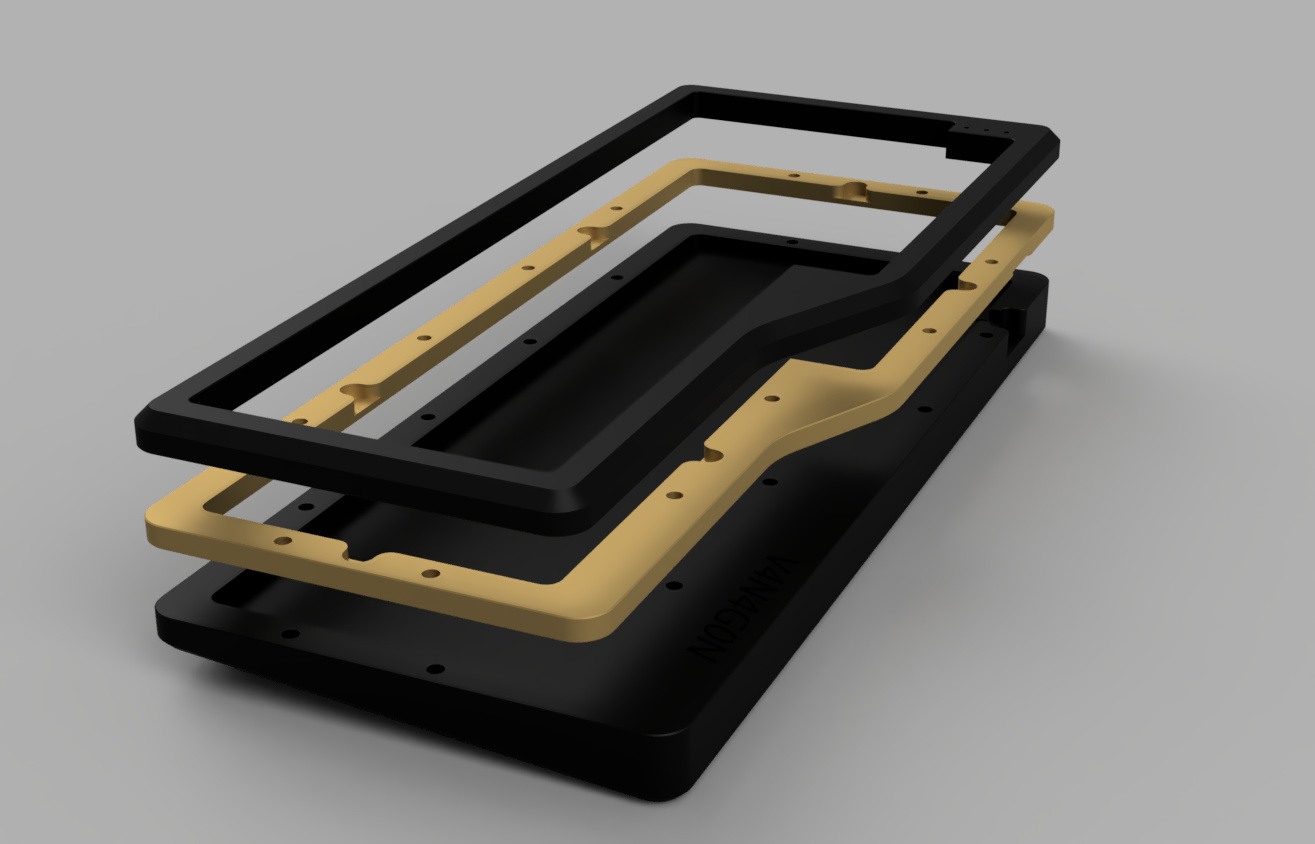
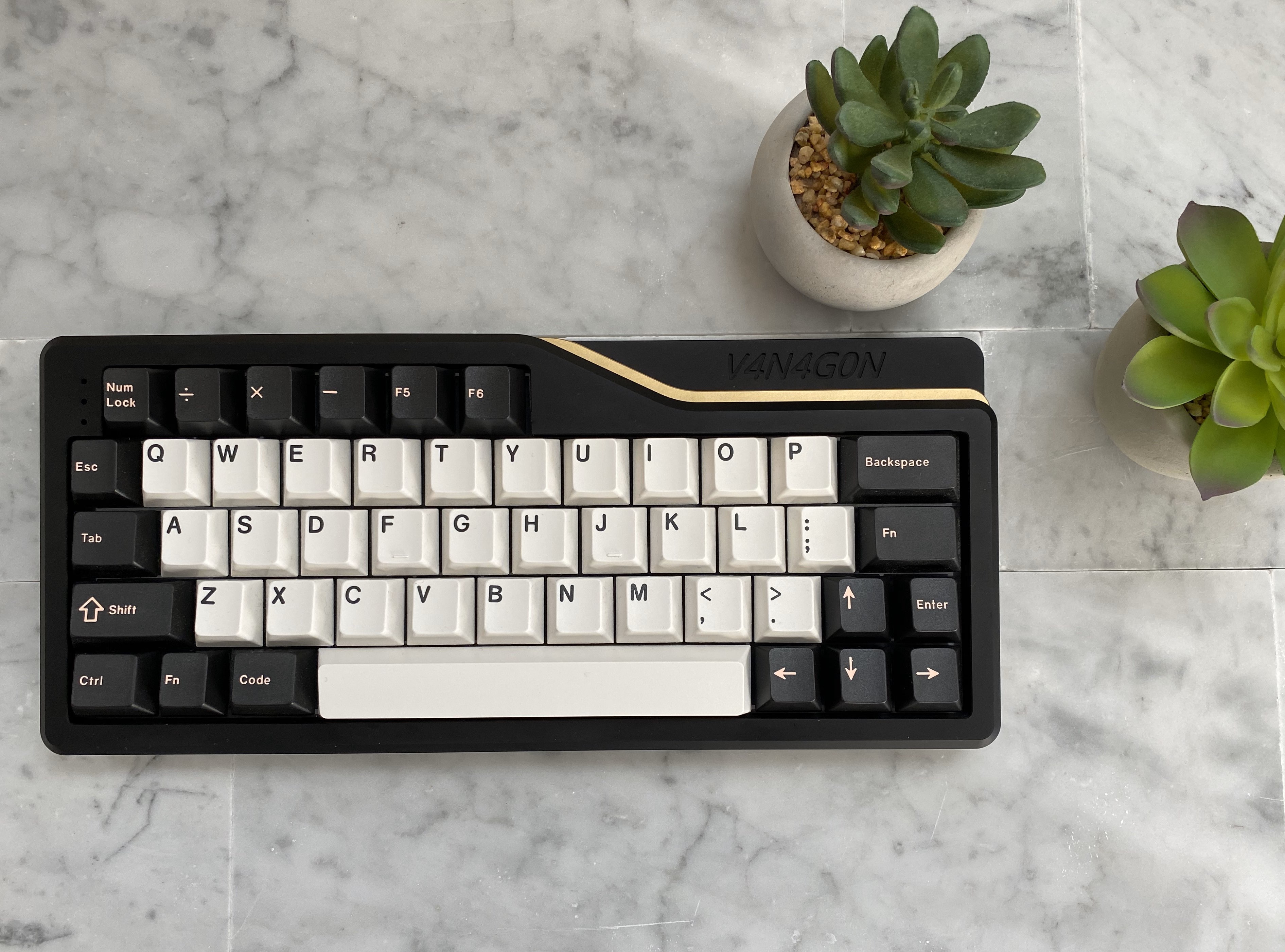
¶ Rev 2.0
The R2 case follows the same design as R1 but replaces the brass middle layer with aluminum. The middle layer received several small quality of life improvements to make it easier to insert the assembled PCB and plate. Initially, all R2 cases were planned to be black anodized top and bottom pieces with a silver anodized or clear coated middle layer to distinguish them from the R1 cases. However it was later revealed that round 2 buyers would be able to choose what colors they would like for their case. After a round of discussion and voting, the decision was made to offer anodized black, blue, violet, and clear-coated "silver". Each buyer was then allowed to select the colors for each of the 3 pieces of their case, resulting in many unique combinations. 30 total cases were produced for round 2.
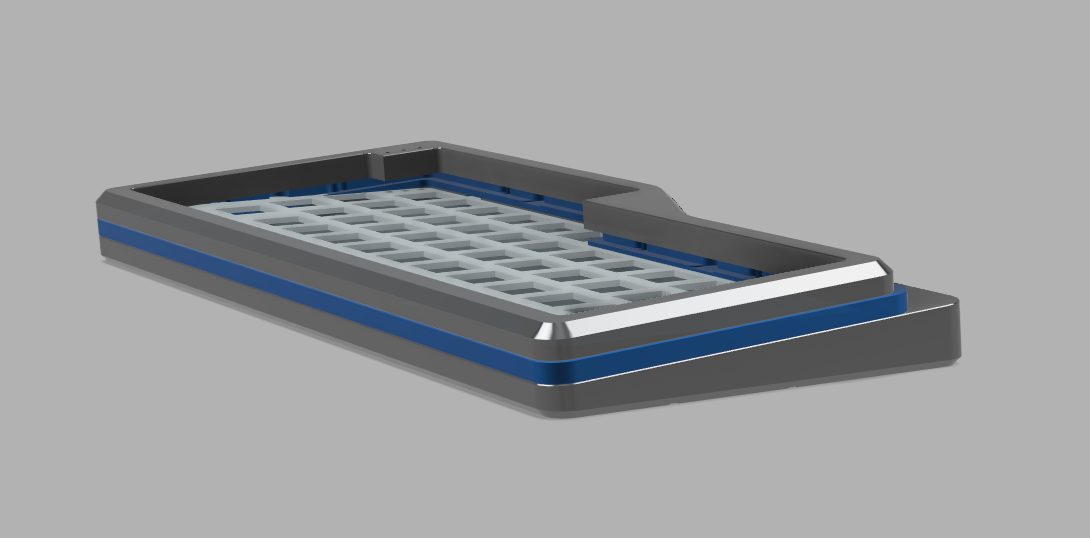
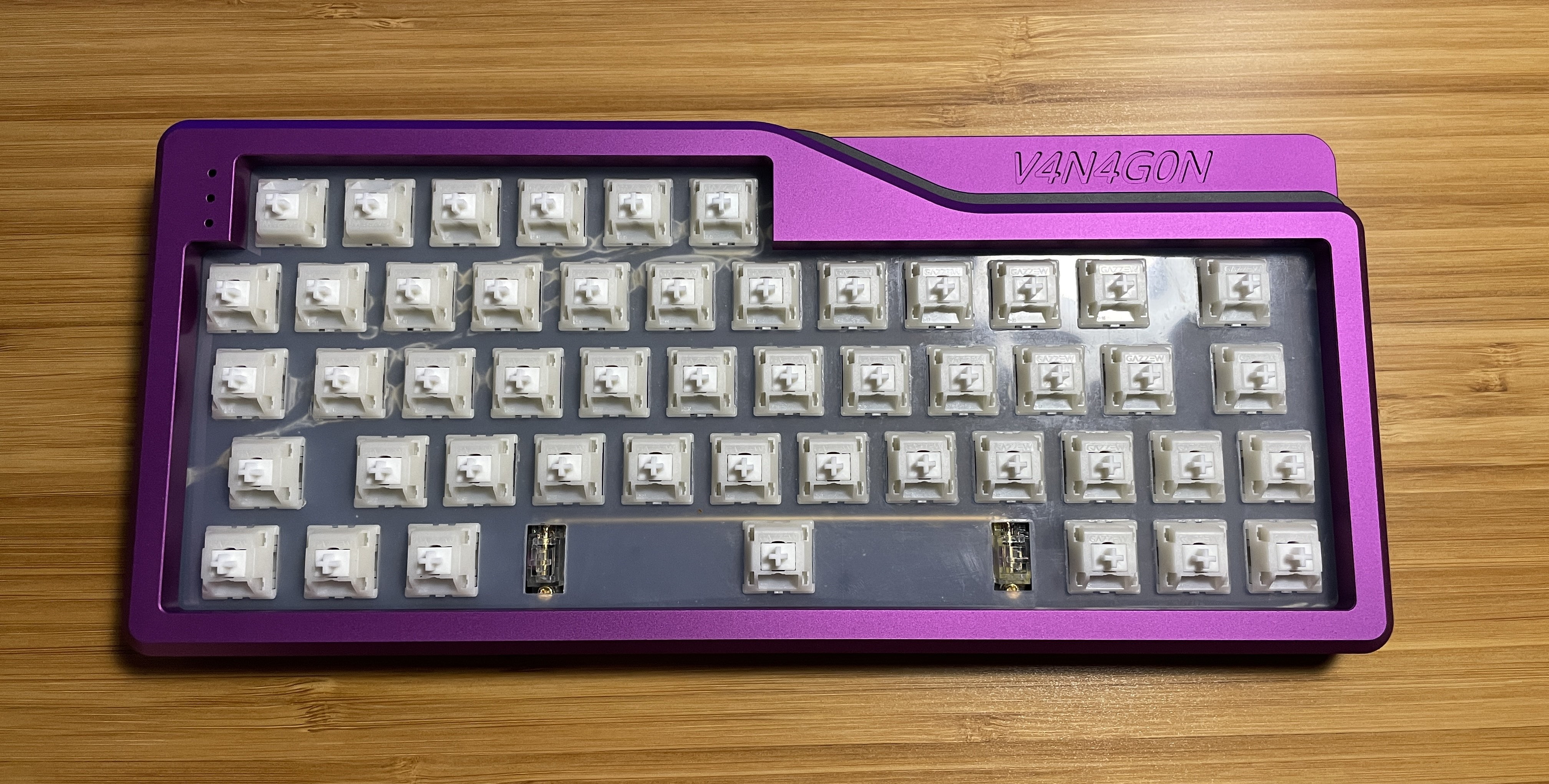
¶ Rev 3.0
The case was redesigned for round 3 following the success of Hull. The R3 V4N4G0N case has been affectionally referred to as "Hullagon" by the community due to its resemblance to Hull and was sold as the Hullagon Keyboard System on trashman.club. R3 cases are low-profile with a bottom mount plate that is attached with four M2x6mm screws installed through four tabs along the left and right edges of the board. The case is made from milled aluminum and anodized with a clear coat, the same process used for the "silver" found on round 2 cases. The space to the right of the half-numrow is squared off with a long, narrow slot resembling the handle from WorldSpawn's acrylic case. The slot is only as wide as a single switch so its functionality as an actual carrying handle is limited. Unlike the Round 1 and 2 cases, the case sits flat with no typing angle. 136 round 3 kits were sold during the 5-day group buy and an unknown additional amount of extras were made.
R1/R2 plates are not compatible with R3 cases due to the change in mounting style.
DXF files do not include traces or pads and are incompatible with RGB LEDs
The FR4 plates included with R3 cases include traces and pads to support three RGB indicator LEDs installed on the tipside plate itself. Supported LED models are WS2812B and SK6812 SMD 5050. If gerber files are ever released for the FR4 plates with RGB support we will mirror them on the Files page.
Round 3 kits included the following:
- Silver anodized aluminum case
- (4) Silver M2x6 screws
- (4) Cork Feet
- Full Space Layout FR4 Plate
- V4N4G0N PCB (Rev 3.0)
- DSA Hullagon Keyset
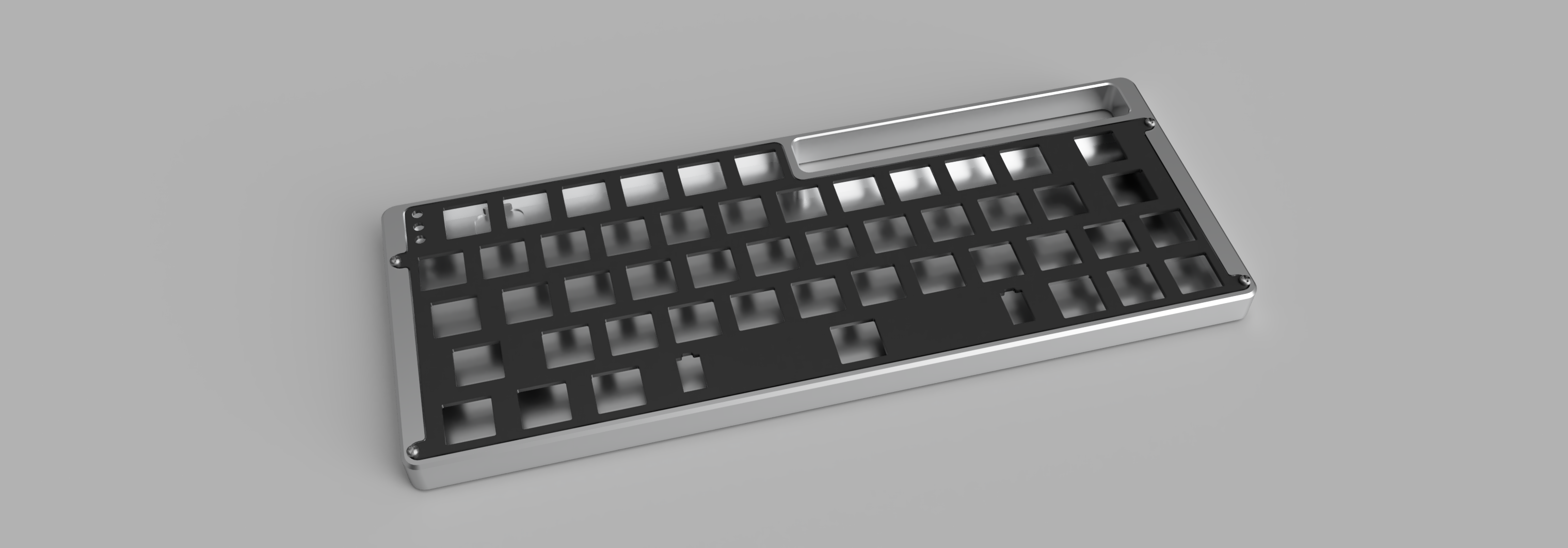
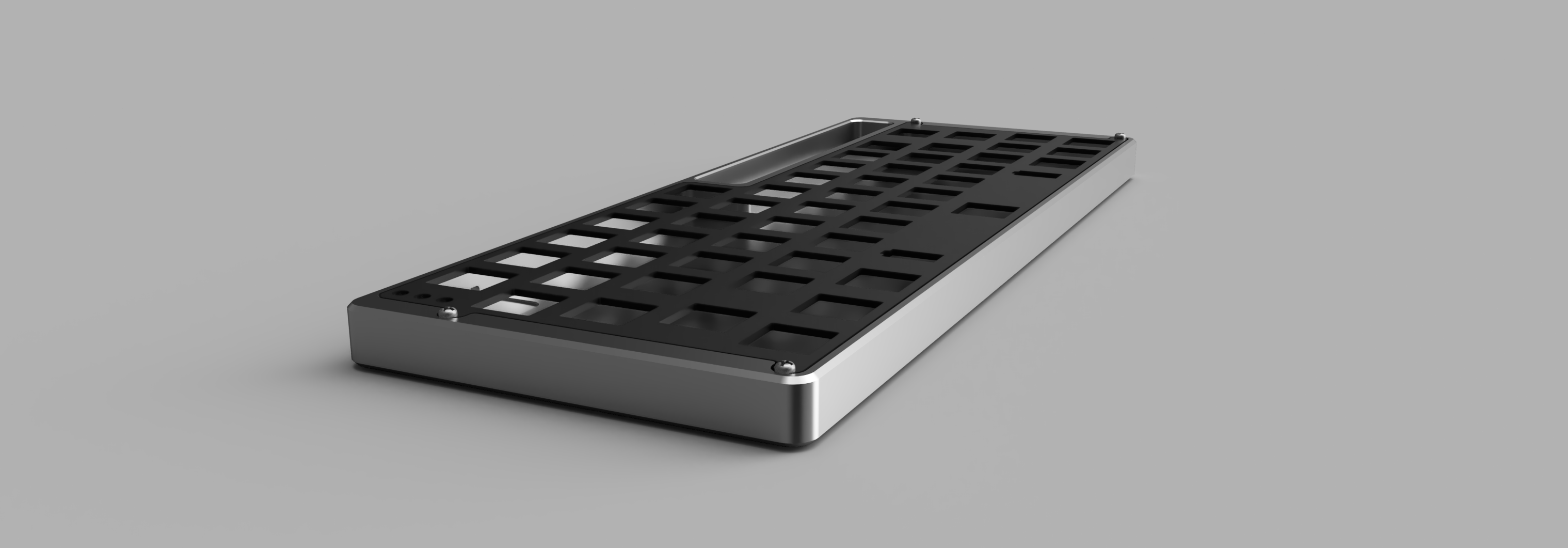
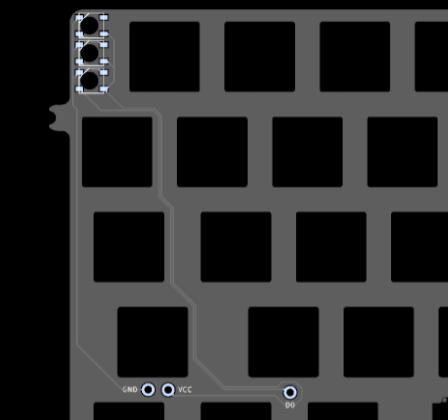
¶ Rev 4.0
The V4N4G0N R4 interest check is open! Check it out in the
#v4n4g0n-r4channel in the 40% Keyboards Discord server.
Several renders of a proposed R4 case have been shared by Trash Man. The case sees a return to a brass mid-plate from the R1 design with the option of either "charcoal" or "sand" anodized aluminum top and bottom pieces. The inside of the bottom piece has been redesigned to accommodate per-switch cutouts and a cable routing hole for the JST cable to support a USB-C daughterboard. The case will feature an updated plate using tadpole mounts. A single LED hole is visible in the renders, suggesting the use of one RGB LED to replace the trio of LEDs on previous models. Trash Man has stated the case will use less screws and utilze alignment pins similar to Embrace.
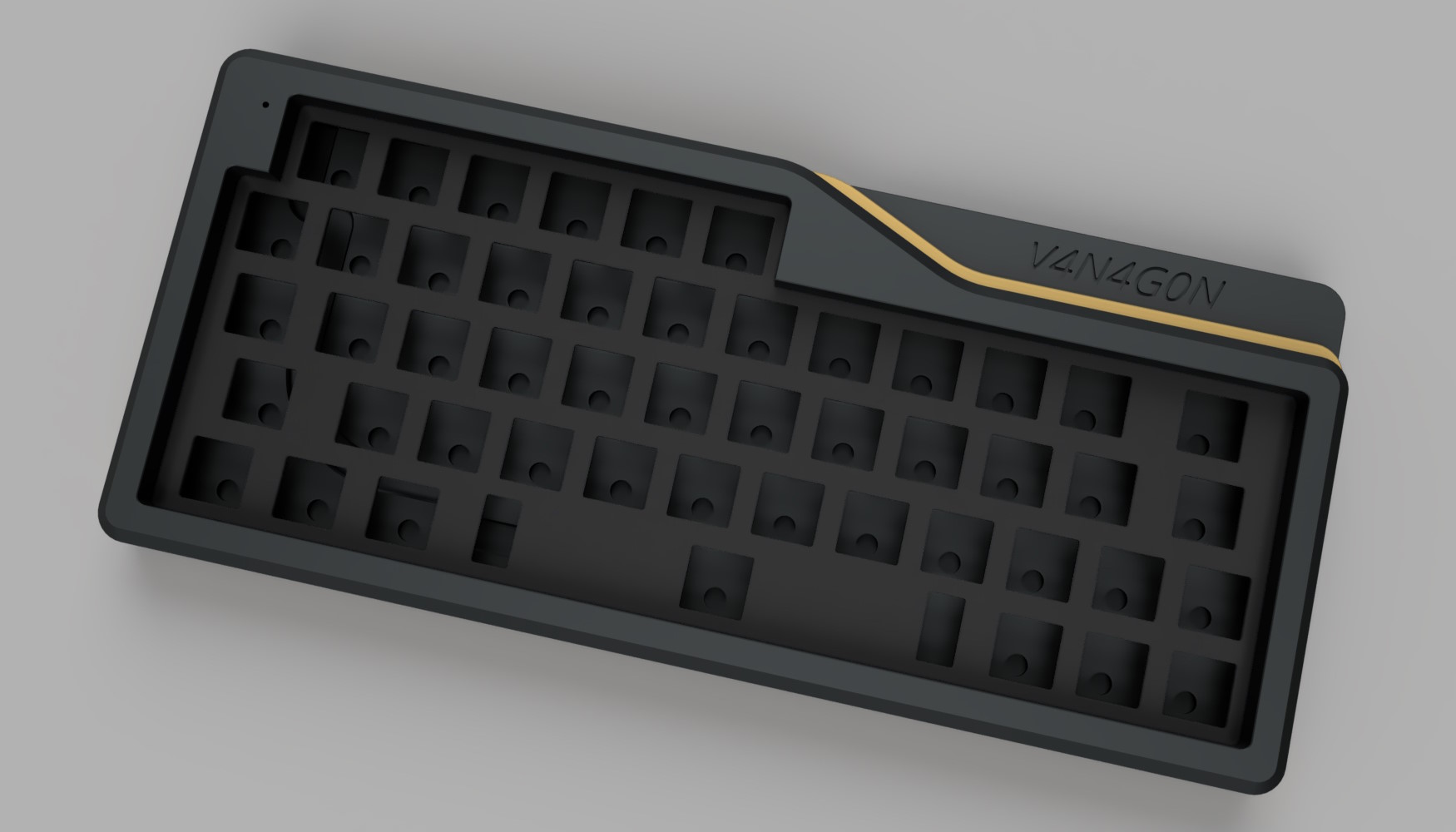
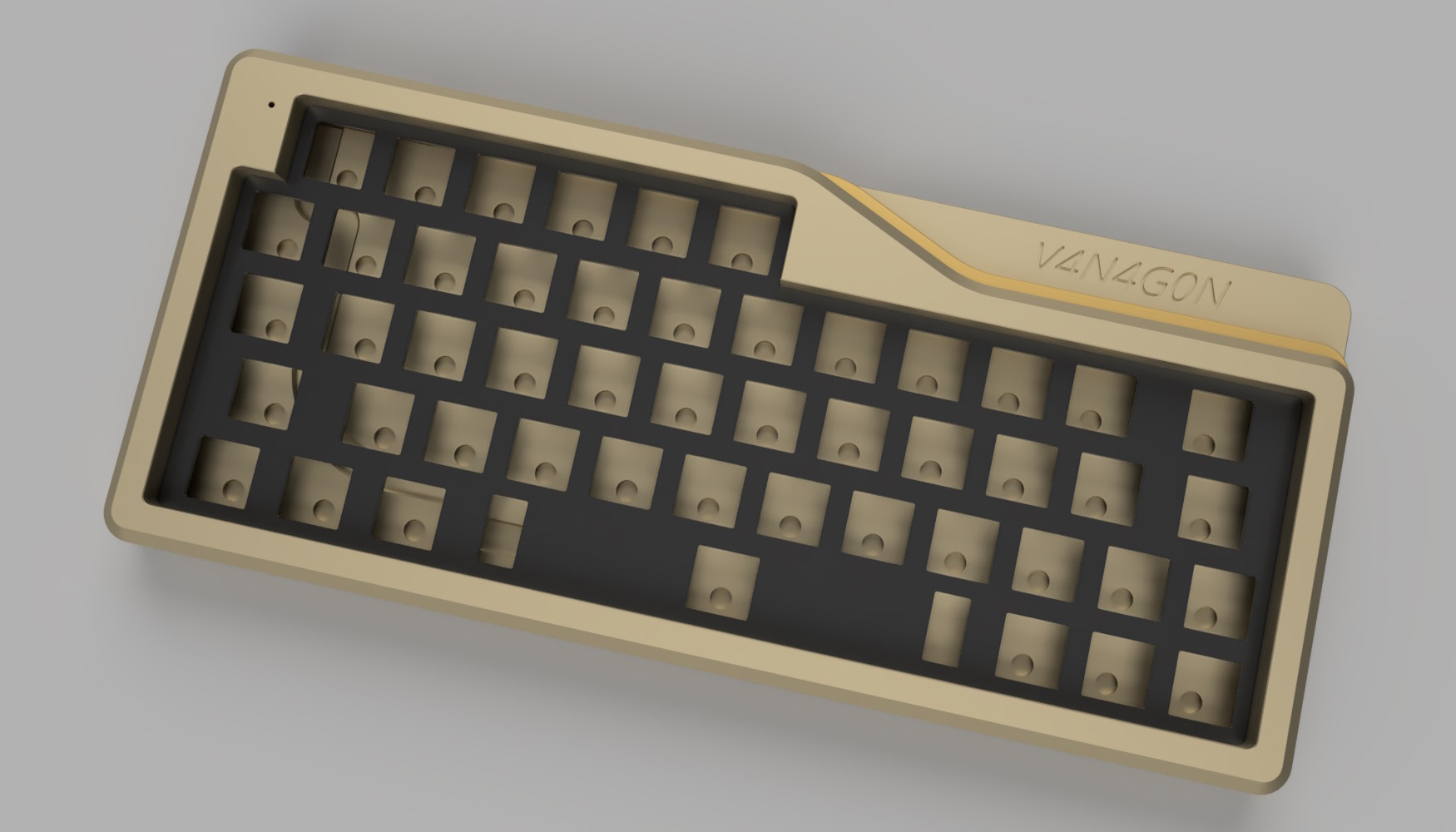
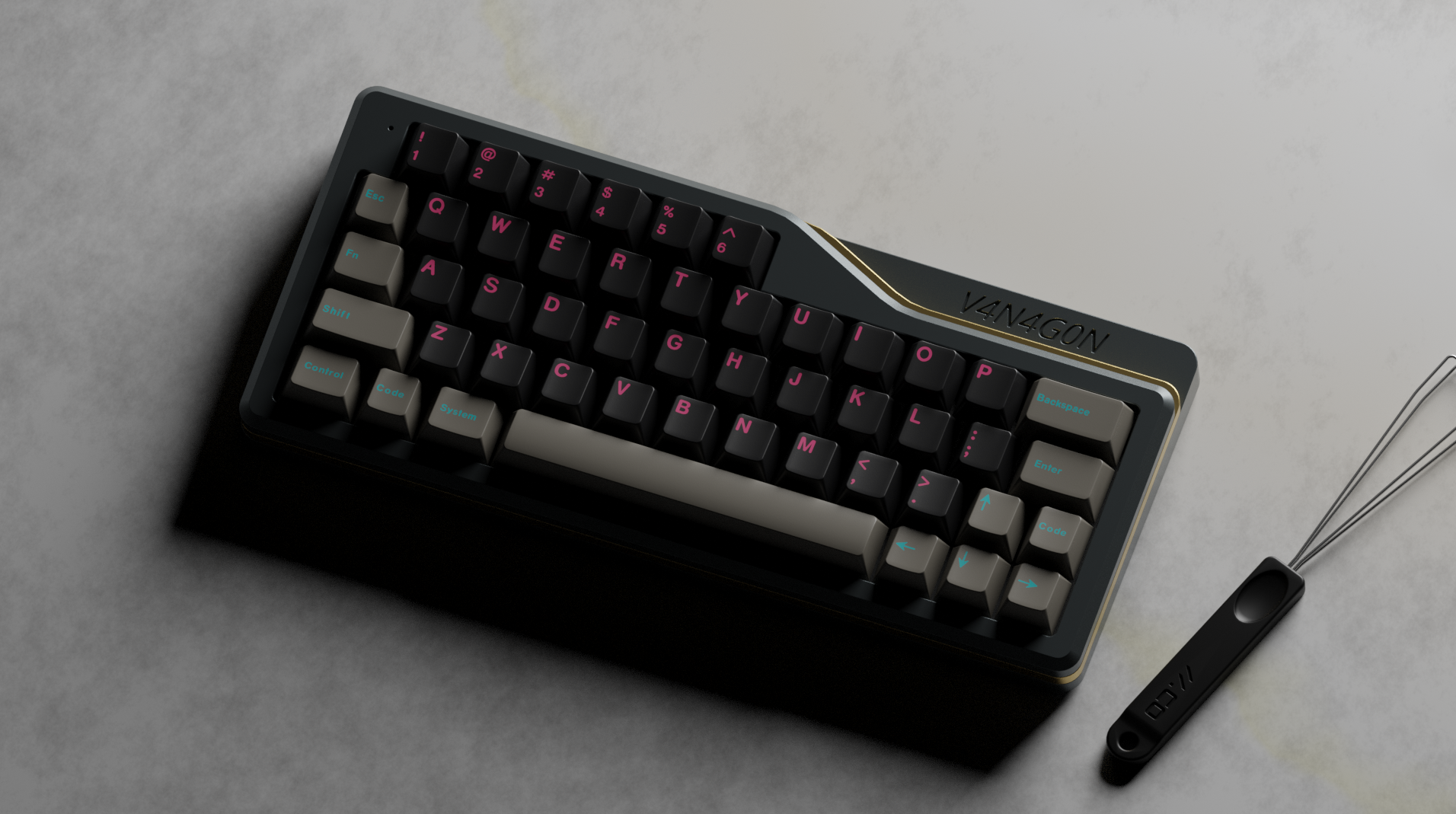
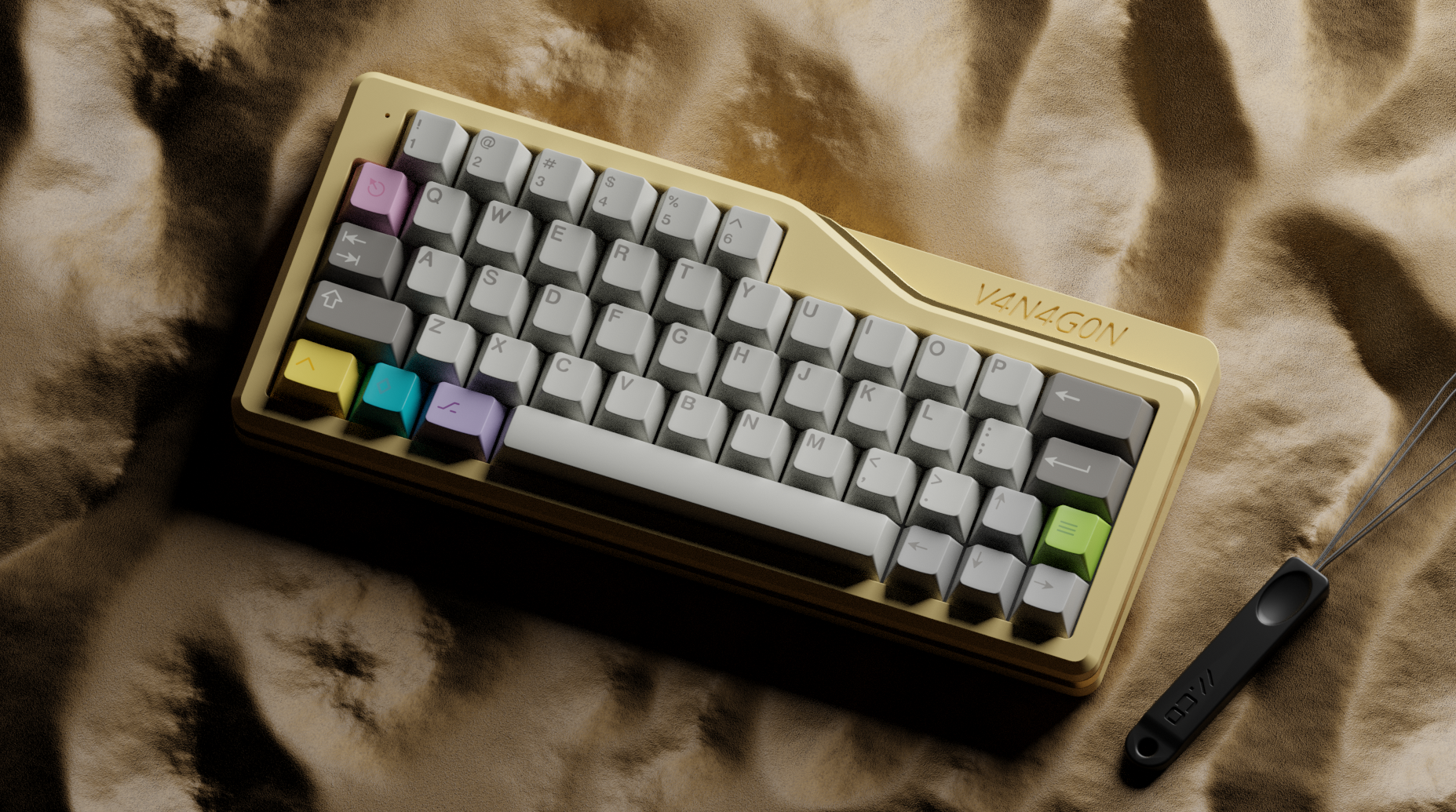
¶ 3D Print
Since V4N kits shipped with two PCBs (and extra PCBs were also made available for purchase after both group buy rounds were fulfilled), a need quickly arose for cases that could work with such an unconventional layout.
A two-piece, 3D printed case was designed by Trash Man that combines the bottom and mid layers of the metal cases into one piece for easier printing and assembly. It uses a separate top piece with a new design that replaces the staggered/layered look from the metal cases with ridged fins.
The case requires six 6x2mm rubber bumpons installed on the bottom case to function as gaskets under the plate. Twelve M3x12mm or M3x14mm socket cap screws are required to assemble the case (definitely go 14mm if you are buying self-tapping bolts). The case has 4 shallow recesses on the bottom for 3/4 inch round adhesive feet.
The STL files for printing the case can be found on the Files page.
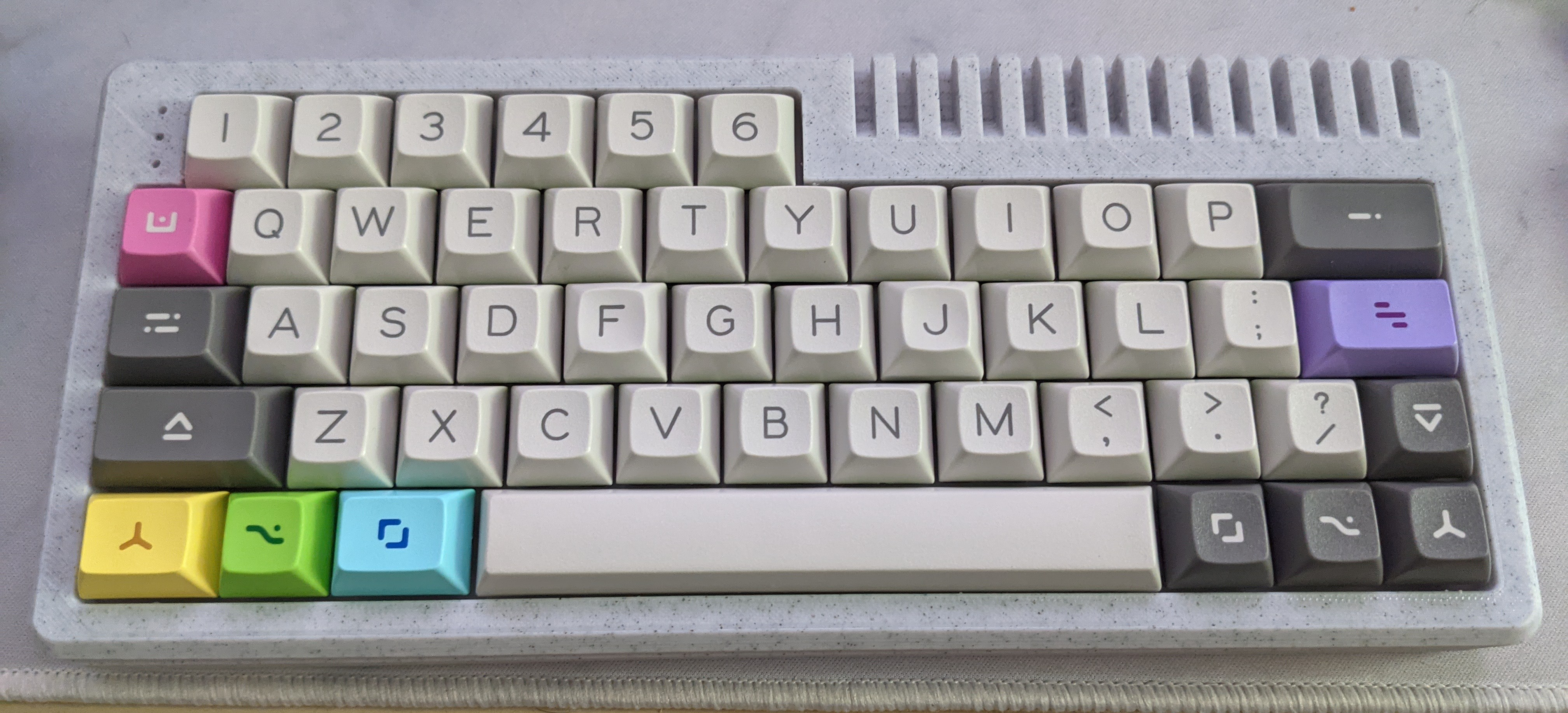
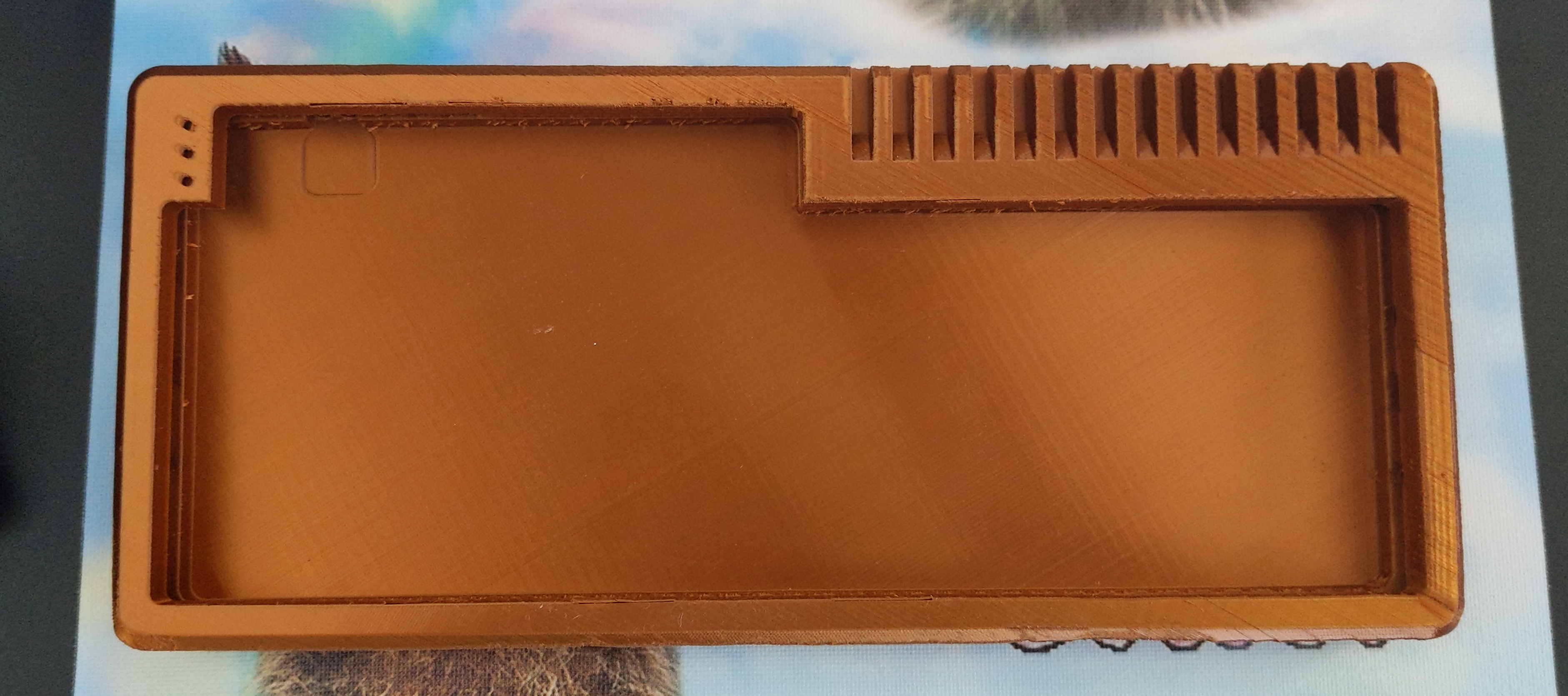
¶ Community
¶ WorldSpawn
A layered acrylic case with a handle is sold built-to-order by Worldspawn Keebs on Etsy. Its design is inspired by fresnel lenses. Buyers can choose a color for each acrylic layer to allow for extra customization. WorldSpawn sells POM and PP plates as well as custom-cut foams to fit between the PCB and plate.
WorldSpawn's case is compatible with stock FR4 plates for R1/R2 metal cases. DXF files for R1/R2 cases are available on the Files page.
Early designs did not include the three holes in the top plate for the indicator LEDs. The LEDs are still visible through most translucent plates but are blocked by opaque, dark acrylic colors. The design was later updated and newer cases include these holes.
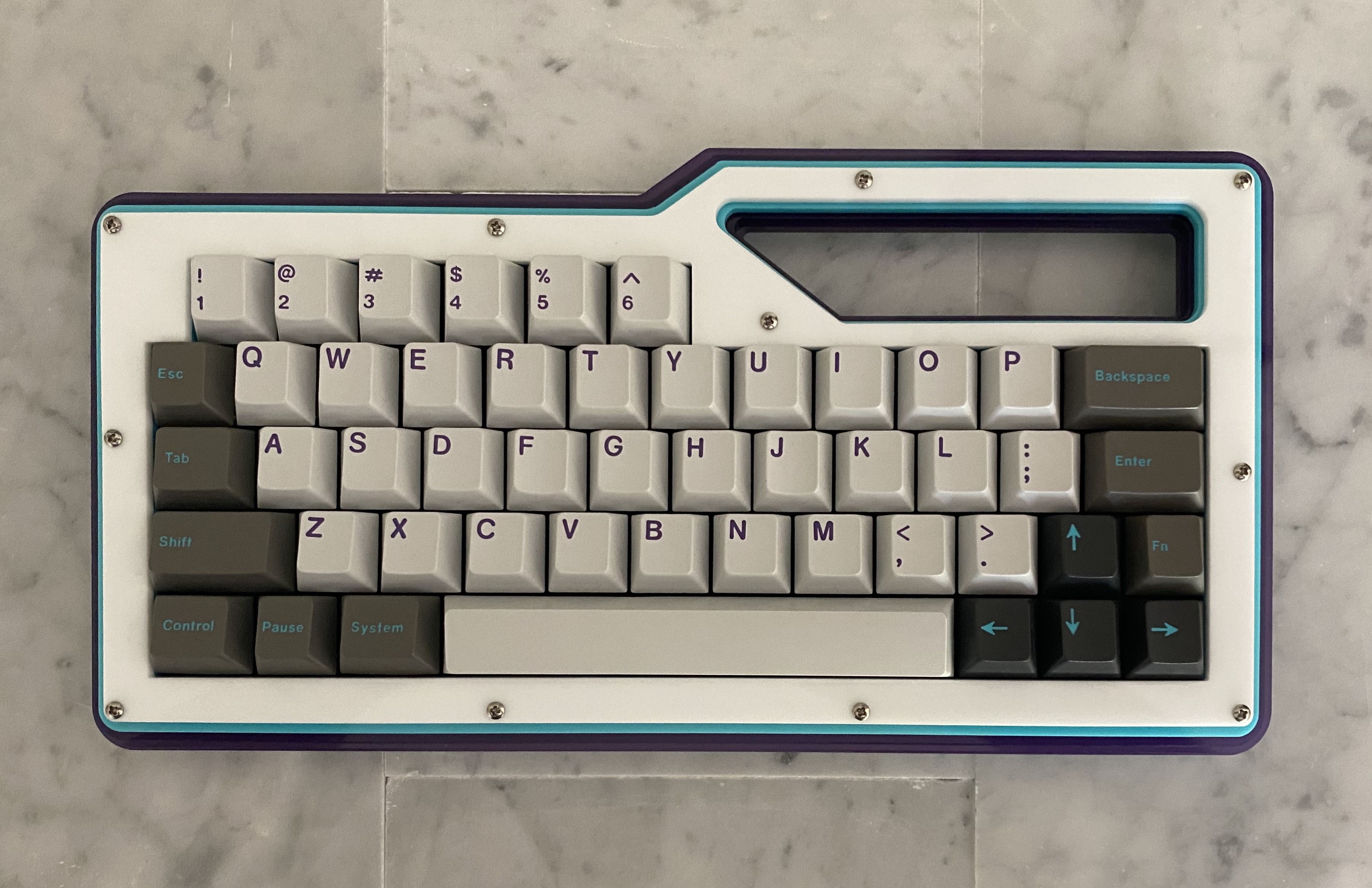
¶ P3DStore
P3DStore.com sells their own layered acrylic V4N4G0N case. The case features a cross-hatch cutout in the space to the right of the numrow that reveals a colored accent insert. Up to eight different colors can be selected for the seven acrylic layers and the included case screws.
The P3DStore case uses its own unique gasket-mount design and is NOT compatible with plates from other cases. Existing V4N4G0N builds must be disassembled and desoldered before installation in this case. Replacement plates must be purchased from P3DStore V4N4G0RTH0N plates are also available for this case.
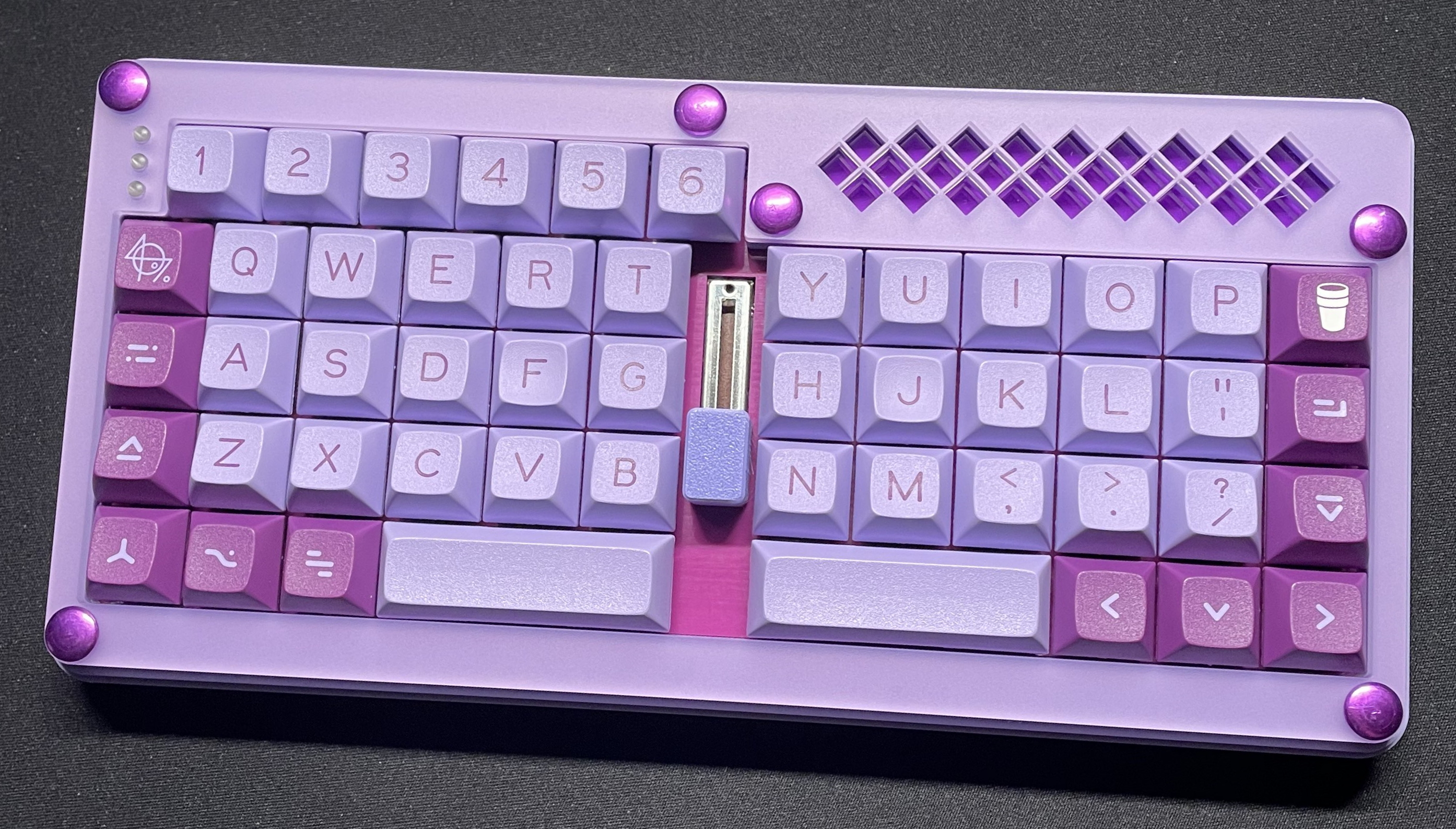
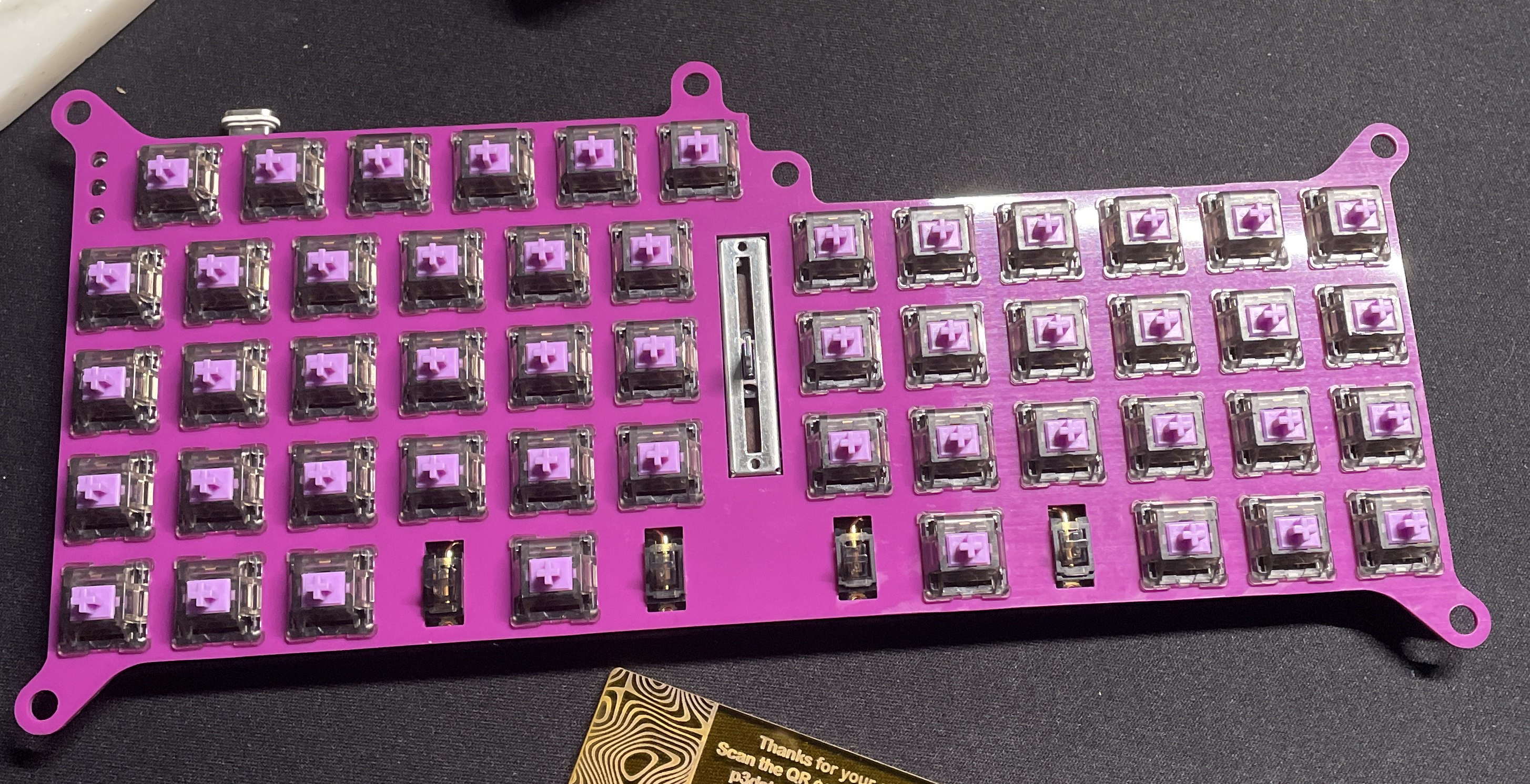
¶ Vandal
Vandal is an open-source, 3D printed, low-profile, bottom-mount case inspired by the R3 V4N4G0N case and Knuckhull. The top of the case features an extended handle for superior portability.
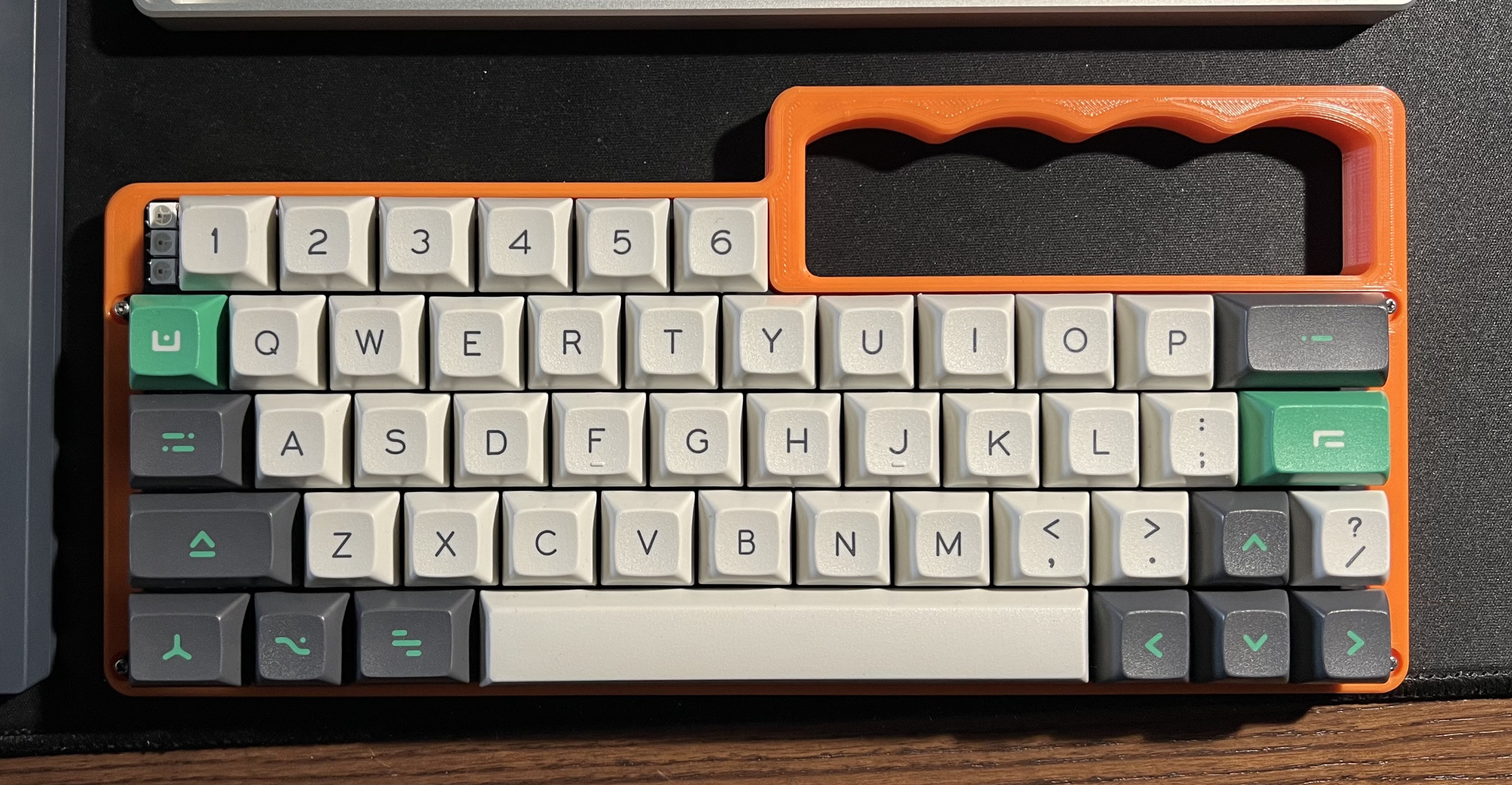
¶ V4N²
V4N² is a modular, open-source, bottom mount case with an optional top piece. The low-profile bottom is available with a flat or angled base and can be used standalone. A top piece can be added for a high-profile design. Multiple top pieces are available with various blocker options to support unique layouts. The case supports both USB positions found on Monorail PCBs for users that want to use the right-side USB port.
